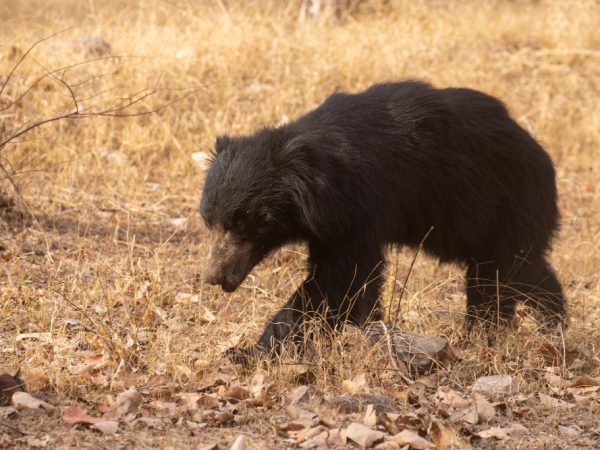Tayrona Colombia: 10 Essential Tips for First-Time Visitors

Tucked along Colombia’s northern coast, Tayrona National Natural Park is one of the country’s most breathtaking destinations. With its mix of lush jungles, palm-fringed beaches, and sacred indigenous history, it attracts travelers seeking both adventure and serenity. If you’re planning your first visit, a little preparation can go a long way in making your trip smoother, safer, and more memorable.
1. Plan Around Park Closures
One of the most unique aspects of Tayrona is its annual closures, when the park is closed to visitors to allow for spiritual and ecological healing. These closures are conducted in collaboration with the local indigenous communities.
Typical closure months:
February
June
October
Check official sources or your accommodation before booking your dates to avoid disappointment.
2. Choose the Right Entrance
Tayrona has two main entrances—El Zaino and Calabazo—each offering a different experience:
El Zaino: Most popular, well-maintained, and suitable for beginners. It provides access to Cañaveral, La Piscina, and Cabo San Juan beaches.
Calabazo: Less touristy, involves a steeper hike, and leads to Pueblito and Playa Brava. Great for hikers seeking fewer crowds.
Tip: Start at one entrance and exit through the other if you’re up for a full-day adventure.
3. Pack Smart but Light
Tayrona is a walking park. You’ll likely be hiking 1–3 hours (or more) to get to beaches or lodges. Packing light and right is essential.
What to bring:
Comfortable hiking shoes or sandals with grip
Lightweight clothing (preferably quick-dry)
Swimsuit and towel
Eco-friendly sunscreen and insect repellent
Reusable water bottle (bring plenty of water!)
Snacks or fruit
Cash (many places do not accept cards
Avoid overpacking, especially if you’re staying overnight or trekking to remote beaches like Playa Brava.
4. Be Ready for Entry Requirements
Foreigners must present a valid passport and often need to show proof of yellow fever vaccination (though it’s not always enforced, it’s highly recommended).
At the entrance, you’ll also need to:
Pay an entrance fee (about COP 63,000–78,000 or \$15–20 USD for foreigners)
Watch a short orientation video
Purchase mandatory insurance (roughly COP 5,000–10,000)
Tip: Bring exact change in Colombian pesos for a faster entry process.
5. Respect Indigenous Culture and Sacred Sites
Tayrona is more than a national park—it’s sacred territory for the Kogi, Arhuaco, Wiwa, and Kankuamo tribes, who consider the land spiritually alive.
Some key points of respect:
Don’t enter restricted areas marked as sacred
Avoid loud noise or parties near indigenous zones
Dress modestly in cultural zones like Pueblito
Learning a bit about the Tayrona people before your visit will enhance your appreciation of the land and its deeper meaning.
6. Swimming Isn’t Allowed Everywhere
Tayrona’s beaches are stunning, but not all are safe for swimming. Due to dangerous currents, several beaches are off-limits for swimmers.
Beaches where swimming is prohibited:
Arrecifes
Cañaveral
Safer beaches for swimming:
La Piscina
Cabo San Juan
Playa Brava (with caution)
Always obey red flag warnings and signage—it can save your life.
7. Stay Overnight for the Full Experience
While Tayrona is doable as a day trip, staying overnight amplifies the magic. Imagine waking to howler monkeys and falling asleep to crashing waves.
Options for accommodation:
Hammocks or tents at campsites (Cabo San Juan, Playa Brava)
Eco-lodges and cabins (Ecohabs, Villa Maria Tayrona)
Hostels and glamping just outside the park
Book early during peak seasons (December–January, Easter week, June–August) as spots fill up fast.
8. Pack Out What You Pack In
Tayrona’s pristine beauty depends on your responsibility. The park operates with limited waste disposal, and visitors are expected to leave no trace.
Tips for eco-friendly travel in Tayrona:
Carry your own trash out
Use biodegradable sunscreen and bug spray
Refrain from touching coral or feeding wildlife
Bring reusable containers and cutlery
Your small actions help preserve Tayrona for future generations.
9. Prepare for Long Hikes and Changing Terrain
Even if you’re not an avid hiker, you’ll be walking a lot. Some trails are sandy, others rocky, and some involve steep climbs and descents.
Trail example:
El Zaino to Cabo San Juan = 2–3 hours (moderate)
Calabazo to Playa Brava = 3–4 hours (challenging)
Tip: Start early to avoid heatstroke and crowds. Bring electrolytes or fruit to stay energized.
10. Disconnect and Embrace the Wild
There’s little to no Wi-Fi or phone reception inside the park. While this might sound daunting, it’s also one of Tayrona’s greatest gifts.
Use this opportunity to:
Be present in nature
Read, journal, or meditate by the beach
Connect with locals and travelers over meals and campfires
Observe wildlife without digital distractions
In Tayrona, time slows down, and the jungle rhythm takes over. Embrace the unplugged experience.
Conclusion: Discover Tayrona the Right Way
Visiting Tayrona Colombia is like stepping into a sacred sanctuary where nature, history, and culture converge. For first-timers, preparation makes the difference between a stressful journey and a transformative one.
By following these 10 essential tips, you’ll not only stay safe and comfortable but also experience Tayrona with the reverence and wonder it deserves. Whether you’re hiking to hidden ruins, watching scarlet macaws in flight, or swimming in turquoise bays, Tayrona promises a deep connection with both nature and yourself.
So lace up your hiking boots, pack your eco-gear, and prepare for an unforgettable journey into one of Colombia’s most treasured natural wonders.
FAQs About Visiting Tayrona Colombia
1. Is Tayrona safe for solo travelers?
Yes, Tayrona is generally safe for solo travelers, including women. Just follow basic precautions—avoid isolated trails after dark, lock up valuables, and stick to well-trodden paths.
2. How many days should I spend in Tayrona?
Two to three days is ideal. This gives you time to explore multiple beaches, take scenic hikes, and enjoy the slow pace without rushing.
3. Are there restaurants inside the park?
Yes. Cabo San Juan has a restaurant and snack bar. Some eco-lodges have their own dining areas. Still, it’s wise to bring fruit, snacks, and extra water, especially for hikes.
4. Do I need to hire a guide in Tayrona?
No guide is required for the main trails. However, for deeper jungle routes or cultural insights—like the trek to Pueblito—a local guide is a great investment.
5. Can I visit Tayrona year-round?
Yes, but the best time is the dry season (December to April). Avoid rainy months (May, September–November) when trails can become muddy and access may be limited.
Also read : Warm Beaches in February USA: 10 Stunning Destinations to Escape the Cold











